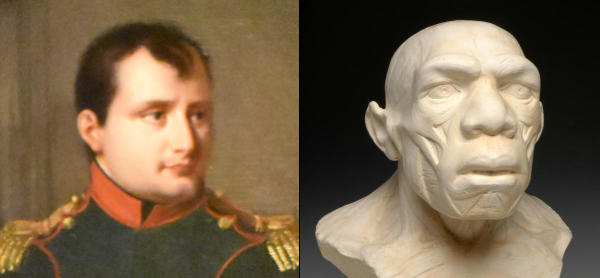
On left, detail from a painting of Napoleon I by Robert Lefèvre. On right, a plaster reconstitution of a Neanderthal man by Joanny Durand © M.N.H.N./Daniel Ponsard.
Men who have been financially successful in business share many of the same ambitions as others when it comes to seeking the pleasures and treasures of Paris. But they have an interest that not all travelers share: Understanding the dominance or superiority of some males over others.
Let’s not be sexist about this. Women can also exhibit this interest.
Two temporary exhibitions in Paris are of special interested for those in search of history’s answer to questions of dominance and superiority, as well as for their children: Napoleon Strategist at the Army Museum (until July 22, 2018) and Neanderthal, the Exhibit, at the Museum of Man (until Jan. 7, 2019).

Napoleon Strategist
You needn’t be under 5’7” to appreciate Napoleon’s rise to power and his place in military history. He was about 5’6½”, by the way, not so short for his era considering that the average height for men in France in 1800 was about 5’5”. But he rounded out with age and tended to surround himself with taller men with tall hats. His enemies got a chuckle out of calling the guy short, and it stuck. He was actually taller than James Madison, U.S. president during the second half of his reign. Furthermore, the current and two previous French presidents are all under 5’9”, comparably as untall as Napoleon 200 years ago. But I digress.
Napoleon himself did not judge leaders by their height but by their military and political acumen. The exhibition Napoleon Strategist at Army Museum begins with a presentation of the busts of men he admired (Hannibal, Julius Caesar, Alexander the Great, Frederick the Great, etc.) before telling how Napoleon Bonaparte-cum-Napoleon I joined their ranks as a one of history’s great strategists.
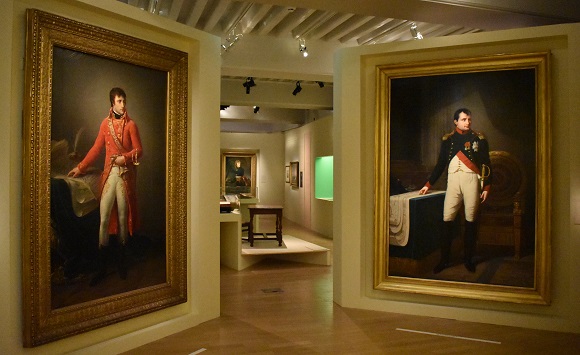
By his mid-30s he oversaw the most powerful and dedicated army in Europe, men willing to fight for Napoleon, for France and for its Revolutionary and post-Revolutionary ideals. For a while there, with an indefatigable rhythm and eagle eye that managed to exploit his adversaries’ weaknesses at nearly every turn, it seemed that the fellow could do no wrong. The streets, bridges and metro stations of Paris are constant reminders of his success as a military strategist: Arcole (Italy), Pyramides (Egypt), Austerlitz (Austerlitz), Iéna (Prussia), Friedland (Poland), Wagram (Austria), etc.
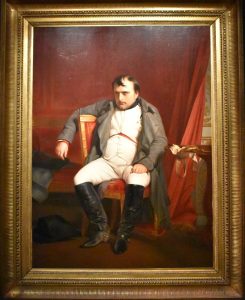
The invincible Napoleon eventually saw the tide turn for several years before washing over him in 1814, bringing about his first abdication and exile. Still, he managed to regain the support of his legions to renew the fight, before the allied forces of Europe brought him down again at Waterloo in the spring on June 18, 1815.
Napoleon Strategist is an exhibition of high quality, as often the case at the Army Museum, and understandable to the general and foreign public, as not always the case. Video stands allow visitors of all ages to play strategy to see if they would make the same choices as the Napoleon. It’s informative and fun the successful American businessman’s entire family.
Neanderthal, the Exhibit
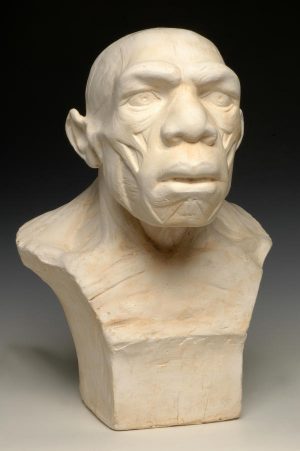
Why do some men flourish and others fall by the wayside or get lost in the mass of humanity? If that question haunts your thoughts as you sit in your office at night imagining ways to beat or punish or tweet about the competition, you may want to step back into the era of Neanderthals, who lived 30,000 to 250-350,000 years ago.
Had he led an army of Neanderthals, Napoleon would have stood taller than most, since the typical height of Neanderthal males was 5’4” to 5’6”. Female Neanderthals were about 5’ to 5’1”. I mention this because in his understanding of superiority the successful American businessman naturally compares himself with other humans. And Neanderthals were humans indeed—our closest relatives on the family tree.
A warning, though, from Marylène Patou-Mathis, scientific curator of the exhibition: “Neanderthal was neither superior nor inferior to modern man. He was different. Hierarchical ranking is contrary to the scientific approach.”
A species that lasted several hundred thousand years shouldn’t be mocked given that ours has been here for only about 45,000, with sperm counts dropping in the West. Nevertheless, the 15,000-year overlap between them and us—us being homo sapiens—raises many questions, whose answers and further questions are accessibly presented in this informative and thought-provoking family-friendly exhibition.
Traces of Neanderthals have been found throughout much of continental Europe as well as around the Black Sea and into the Middle East. The image of primitive, apish, club-wielding beasts that emerged from the initial study of skeletal remains found in the Neander Valley (or Neandertal) near Dusseldorf in 1856 has softened with further study over the past 150 years.
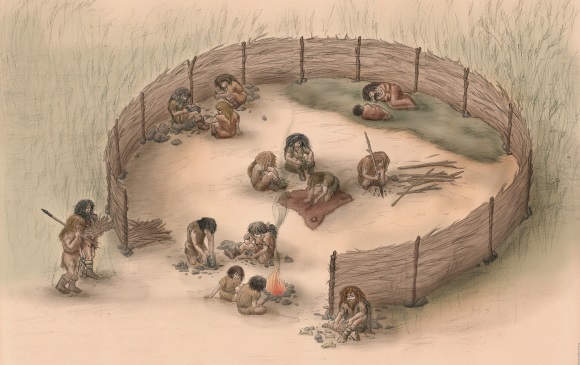
Fossils, facial reconstitutions and information about the habitats, rites, genes and diet of Neanderthals presented in the exhibition reveal a clearly human image of our ancestral relatives. Various hypotheses as to the reasons for their extinction are presented (climate change, extermination by us, disease, lack of subsistence, etc.), food for thought without providing a conclusive answer.
In a sense they didn’t wholly disappear since those of us of European and Asian decent share 1-4% of the Neanderthal genome. Those of us of African descent do not. I don’t know what to do with those facts other than marvel at the multifaceted study of evolution, and such marveling is reason enough to visit this exhibition.
Here’s something else to marvel at: a great view of the Eiffel Tower from the museum’s café-snack bar.
The ticket to this exhibition also gives entrance to a second exhibition entitled “US AND THEM – From prejudice to racism” as well as to the museum’s main collection.
* * *
Napoleon Strategist, April 6-July 22, 2018 at the Musée de l’Armée – Les Invalides (the Army Museum), 129 rue de Grenelle, 7th arr. Open daily from 10am, until 6pm Mon., Wed., Thurs, Fri., until 9pm Tues., until 7pm Sat., Sun. 12€, includes entrance to the main collections. Free for under 18 years old.
For a glimpse of the daily life of Emperor Napoleon I beyond this exhibition, consider a visit to the Napoleon Museum at the Castle of Fountainebleau, southeast of Paris.
Neanderthal, the Exhibit, March 28, 2018 to January 7, 2019 at the Musée de l’Homme (The Museum of Man), 17 place du Trocadéro, 16th arr. Open daily except Tuesday, 10am-6pm. Closed Jan. 1, May 1, Dec. 25. 12€. Free for under 19 years old.
© 2018, Gary Lee Kraut

